Progressive Muscle Relaxation: 10 Scripts for Effective PMR
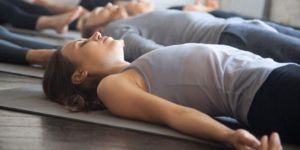 Three… two… one…
Three… two… one…
I relax my shoulders quickly and completely.
When the tension is released, I feel a warm glow in my muscles, almost a tingle.
This is my second week of progressive muscle relaxation (PMR), a technique established over many years and validated by research for managing stress, anxiety, and other health problems (Mackereth & Tomlinson, 2010).
The therapy, involving a cycle of tensing and releasing specific muscle groups one by one, can be mentally and physically tiring, at least initially.
However, with practice, it becomes easier. I’d even say I’m beginning to enjoy it.
Once the session is over, I feel completely relaxed, my mind and body at peace and increasingly connected.
But how?
Anxiety and other similar conditions can leave us feeling so tense that we become unable to recognize what it feels like to be relaxed. PMR helps us to cue this released state when we start to become wound up.
Within this article, we will discuss the origins of PMR, how to use it, and its benefits. Several mediums are offered in which to try the technique out, including written, audio, video, and digital tools.
Before you continue, we thought you might like to download our three Mindfulness Exercises for free. These science-based, comprehensive exercises will help you cultivate a sense of inner peace throughout your daily life and also give you tools to enhance the mindfulness of your clients, students, or employees.
This Article Contains:
- What Is Progressive Muscle Relaxation?
- When and Why Is It Used in Therapy?
- Brief History of PMR
- 4 Proven Benefits of PMR
- A Step-By-Step Guide
- 2 Useful Scripts
- 2 Techniques of PMR
- Useful Audios and Videos
- 2 Helpful Exercises and Worksheets
- PMR for Kids and Teens
- Meditation, Mindfulness, and PMR
- A Look at Popular PMR Apps
- PositivePsychology.com’s Relevant Resources
- A Take-Home Message
- References
What Is Progressive Muscle Relaxation?
Stress and anxiety cause muscular tension. PMR relieves this tightness by tensing and releasing one muscle group at a time.
The technique builds on the theory that when you are physically relaxed, you cannot feel anxious (Jacobson, 1977). Such deep relaxation has proven highly effective at relieving symptoms that arise from several conditions including anxiety, insomnia, stress, headaches, high blood pressure, and even cancer pain (Mackereth & Tomlinson, 2010; Kwekkeboom, Wanta, & Bumpus, 2008).
The practitioner, either in person or as a recording, guides you through a series of steps to work on one muscle group at a time in a specific order. As you breathe in, you tense the first muscle group and hold for five to ten seconds. Then while you exhale, you fully release that tension. After relaxing for 10 to 20 seconds, you repeat each step for the next muscle group.
And, surprisingly, it works really well.
When and Why Is It Used in Therapy?

It is valuable as a standalone treatment or in conjunction with mindfulness, Cognitive Behavioral Therapy, hypnotherapy, or other positive psychology interventions.
And, though few therapies endure, PMR has been around for many years and often forms part of clinical psychology training.
So, why is PMR ahead of its time?
The lasting appeal of this successful relaxation technique is its recognition of the fundamental connection between the body and mind. After all, the mind has a setting. It sits within a brain; it is housed (embodied) within a physical form and has ecological context, impacted by its environmental surroundings (Cappuccio, 2019).
And science has only recently rediscovered the notion of embodied cognition.
Brief History of PMR
Edmund Jacobson’s interest in anxiety began in a bicycle shop fire on the north side of Chicago in 1898. Aged 10, he was struck by how his father, who was deeply impacted by the incident, changed from being a quiet man to being, in Jacobson’s (1977) words, “excitable.”
This unlikely event led Jacobson on a journey that lasted a lifetime: to understand how to treat excitability and nervousness.
Seventeen years later, in 1905, while a Harvard University student, he discovered that deeply relaxed students were not startled by sudden noises.
In response to his ongoing research, Jacobson developed a complex and lengthy technique for practitioners to monitor and release unwanted tension in clients (Mackereth & Tomlinson, 2010).
Over the years, the technique has been adapted and, for practical reasons, shortened, but it remains true to the idea that physical relaxation has a positive effect on the mind (Wolpe, 1961).
Abbreviated progressive muscle relaxation training combines the tensing and releasing of muscles, while focusing on breathing to manage stress and anxiety.
4 Proven Benefits of PMR

Over time, you can learn what it feels like and cue this state to lower tension and stress levels when you start to feel anxious.
The technique offers relief for many health conditions including lack of sleep, anxiety, depression, high blood pressure, digestive disturbances, and the side effects of cancer treatment.
Science has recognized the benefits of PMR in a range of fields.
1. Health
Interventions for parents of children receiving treatment for malignancy – a painful and upsetting condition where abnormal cells divide and invade nearby tissues – reduced anxiety and improved overall mood (Tsitsi, Charalambous, Papastavrou, & Raftopoulos, 2017).
Indeed, PMR is so successful in healthcare settings that along with other relaxation techniques, it is routinely offered by medical practitioners to their patients (Mackereth & Tomlinson, 2010).
2. Sport
Psychological factors such as anxiety impact the amount and the quality of sleep, a common issue among competitive athletes preparing for an event.
Medication to manage insufficient sleep is often unsuitable for elite athletes due to concerns regarding the World Anti-Doping Agency or the risk of adversely impacting performance.
PMR is recognized by the American Psychological Association as an empirically supported treatment for insomnia and offers a safe and viable alternative (McCloughan, Hanrahan, Anderson, & Halson, 2016).
3. Cancer treatment
The side effects of chemotherapy can have a significant and negative impact on cancer patients’ lives.
PMR offers some relief.
Several studies have identified its potential to reduce symptoms of pain, nausea, anxiety, and depression in cancer patients (Charalambous et al., 2016; Kwekkeboom et al., 2008).
4. Education
PMR has also proved successful in learning environments.
When high-stress college students were trained in the technique, there were significant short-term effects including increased mental and physical relaxation and lowered stress (Dolbier & Rush, 2012).
A Step-By-Step Guide
Though often guided by a therapist, there are several videos, audios, and apps that can take you through the steps required to perform PMR.
The steps involved are usually a variation on the following:
Preparation
- Set aside 15 minutes.
- Find somewhere quiet and comfortable, where you will not be disturbed.
- Remove your shoes and wear loose clothing.
- When you start, perform PMR twice a day while you are feeling calm.
- Going forward, follow the steps once a day, three to four times a week, or as needed.
- Consult your doctor before performing PMR if you have any underlying medical conditions that hinder physical activity.
- Do not perform PMR if you have broken bones or pulled muscles.
Get ready
Before you begin, take five slow, deep breaths.
Step one: Tension
- As you breathe in, deliberately and gently tense the first muscle group as hard as you can.
- Feel the tension in your muscles.
- It may cause some discomfort or shaking but not pain.
- Try to tense only the muscle group you are targeting.
- Hold for five to ten seconds.
Step two: Relax the muscles
- Then while you exhale, quickly and fully relax the tensed muscles.
- Focus on the changing sensations. If it helps, picture feelings of stress leaving the body.
- Notice the difference between tension and relaxation.
You will feel the muscles become loose and limp.
Step three: Rest
- Take 10–20 seconds and relax.
- Repeat steps one, two, and three, tensing and relaxing each of the muscle groups listed in the table below.
Step four: Return
- When finished, count backward from five to one, and return focus to the present.
- Enjoy the feelings of deep relaxation.
It will take time to learn to use PMR successfully. And, initially, it may feel uncomfortable and require considerable effort and focus.
As you become more practiced, you will become fully aware of the difference between tensed and relaxed muscles, and it will feel more enjoyable.
Ongoing, the skill will become an effective way of managing anxiety.
Muscle groups
The table below contains a list of muscle groups to work through at each session (modified from the Health Library at the University of Michigan Medicine):
| Muscle group | Action |
|---|---|
| Hands | Clench/make a fist. |
| Wrists and forearms | Extend and bend your hands back at the wrist. |
| Biceps and upper arms | Make a fist and bend your arms at the elbows, flexing your biceps. |
| Shoulders | Shrug them (raise them toward your ears). |
| Forehead | Wrinkle into a deep frown. |
| Around the eyes and bridge of the nose | Close your eyes as tightly as possible while remaining comfortable (preferably remove contact lenses before you start.) |
| Cheeks and jaws | Smile as widely as you can. |
| Around the mouth | Press your lips together tightly. Check your face for tension. |
| Back of the neck | Press the back of your head against your support (chair headrest or the floor.) |
| Front of the neck | Touch your chin to your chest, but avoid creating tension in your neck and head. |
| Chest | Take a deep breath and hold it for 5 to 10 seconds. |
| Back | Arch your back up and away from the floor or chair. |
| Stomach | Suck into a tight knot. (Check your chest and stomach for tension.) |
| Hips and buttocks | Press your buttocks together tightly. |
| Thighs | Clench them hard. |
| Lower legs | Point your toes toward your face. Then point your toes away and curl them downward at the same time. |
2 Useful Scripts
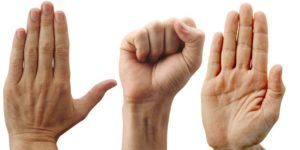
Berkeley Law, one of the premier law schools in the U.S., encourages staff and students to focus on their mental wellbeing actively. And PMR is a technique they actively encourage. Take a look at the script they use; it offers unambiguous and comprehensive guidance for the practitioner.
The Oxford Health NHS Trust also recognizes the importance of managing anxiety. It provides useful and practical scripts for several relaxation techniques, including a full and abbreviated PMR.
2 Techniques of PMR
PMR requires that we take 20 minutes from our busy daily schedules.
When practiced over several weeks, we reap the positive benefits: reduced anxiety and relief from stress.
There can be occasions when finding adequate time to practice PMR may prove difficult.
At these times, it is worth making use of one of the abbreviated versions.
Click here to download the Basic Progressive Muscle Relaxation Script. It’s a reduced version that can prove useful when less time is available.
Or, as an alternative:
Click here to download another pragmatic and straightforward Progressive Muscle Relaxation script.
Useful Audio and Video
The best audio for relaxation should leave you with the experience that you have been on a journey.
When the PMR recording has finished, you should feel you have visited somewhere familiar, returning renewed, refreshed, and deeply relaxed.
Listen to the following recordings and choose the voice or style that works best for you.
Perhaps it’s the visual image of water that works so well, but watch the following video and listen to the audio for a productive PMR session.
This excellent audio will take you through PMR and return you to a state of relaxation.
2 Helpful Exercises and Worksheets
While the basic principles of PMR remain the same, there are many scripts with slight variations that offer appropriate support.
Follow this link to download and work through a clear and concise Progressive Muscle Relaxation one-pager.
Click on the Progressive Muscle Relaxation Clinical Tool for a comprehensive guide for clinicians wishing to implement PMR.
PMR for Kids and Teens
The following YouTube cartoons package PMR for the younger age group in an easily digestible form.
A well-presented and light-hearted PMR cartoon for children:
An entertaining audio, accompanied by animal pictures that guide children through PMR:
Meditation, Mindfulness, and PMR
A 2009 study compared the effects of mindfulness meditation and PMR over five weeks (Agee, Danoff-Burg, & Grant, 2009). Both therapies were found to be equally effective at reducing stress and offer complementary approaches that can be used alongside one another.
Along with other more recent research, it is clear that we can all benefit from meditation, mindfulness, and PMR to improve coping and manage anxiety and stress (Gok Metin, Karadas, Izgu, Ozdemir, & Demirci, 2019).
Find the approach that works best for you at this point in your life. You may find that a combination keeps you more focused and interested.
A Look at Popular PMR Apps
An app can be a convenient and straightforward way to perform PMR. Indeed, a 2019 article appearing in Nature Digital Medicine, reported that a specially developed PMR app had proved clinically effective at reducing migraines (Minen et al., 2019).
The following apps all provide positive support, and ease of access, for PMR on our phones and tablets.
1. Superchill (PMR)

2. PMR – Progressive Muscle Relax

3. Progressive Muscle Relaxation

4. Autogenic Training – AT Pro – English Version

PositivePsychology.com’s Relevant Resources
Our Five Senses Worksheet and the 3-Step Mindfulness Worksheet are incredible resources for invoking a mindful state and bringing awareness to the present.
The Mindfulness-X© Masterclass can be extremely useful and can be used to prepare for or as a complement to PMR training.
If you’re looking for more science-based ways to help others enjoy the benefits of mindfulness, this collection contains 17 validated mindfulness tools for practitioners. Use them to help others reduce stress and create positive shifts in their mental, physical, and emotional health.
To make positive psychology part of every day, we share free positive psychology PDF’s in this article.
A Take-Home Message
PMR has endured as a relaxation technique due to its pragmatic, tangible approach to relieving tension, anxiety, and stress. What it does well is to demonstrate a clear and direct connection between anxiety and tension in the physical body and the mind.
PMR is underpinned by the belief that overcoming tension in the body resolves distress in the brain.
Once you are confident, the technique can prove hugely beneficial, both as a long-term approach to stress management and for an immediate targeted release of escalating physical tension.
Indeed, with practice, it is possible to become so in tune with your body that you can identify and release even early signs of tension.
Overall, PMR provides a viable alternative to other treatments (including prescription drugs) to practically and actively approach physical and mental distress. Even one or two sessions will provide significant relief to tension, but when used regularly, it proves to be both a protective and life-enhancing coping mechanism.
Why not try one of the scripts, videos, audio, or apps, and try it out?
We hope you enjoyed reading this article and are eager to try out the scripts and apps, and don’t forget the three Mindfulness Exercises that you can download for free.
- Agee, J. D., Danoff-Burg, S., & Grant, C. A. (2009). Comparing brief stress management courses in a community sample: Mindfulness skills and progressive muscle relaxation. Explore: The Journal of Science and Healing, 5(2), 104–109.
- Cappuccio, M. (2019). Handbook of embodied cognition and sports psychology. MIT Press.
- Charalambous, A., Giannakopoulou, M., Bozas, E., Marcou, Y., Kitsios, P., & Paikousis, L. (2016). Guided imagery and progressive muscle relaxation as a cluster of symptoms management intervention in patients receiving chemotherapy: A randomized control trial. PLOS ONE, 11(6).
- Dolbier, C. L., & Rush, T. E. (2012). Efficacy of abbreviated progressive muscle relaxation in a high-stress college sample. International Journal of Stress Management, 19(1), 48–68.
- Gok Metin, Z., Karadas, C., Izgu, N., Ozdemir, L., & Demirci, U. (2019). Effects of progressive muscle relaxation and mindfulness meditation on fatigue, coping styles, and quality of life in early breast cancer patients: An assessor-blinded, three-arm, randomized controlled trial. European Journal of Oncology Nursing, 42, 116–125
- Jacobson, E. (1977). The origins and development of progressive relaxation. Journal of Behavior Therapy and Experimental Psychiatry, 8(2), 119–123.
- Kwekkeboom, K. L., Wanta, B., & Bumpus, M. (2008). Individual difference variables and the effects of progressive muscle relaxation and analgesic imagery interventions on cancer pain. Journal of Pain and Symptom Management, 36(6), 604–615.
- Mackereth, P. A., & Tomlinson, L. (2010). Progressive muscle relaxation: A remarkable tool for therapists and patients. In A. Cawthorn & P. A. Mackereth (Eds.), Integrative hypnotherapy (pp. 82–96). Elsevier.
- McCloughan, L. J., Hanrahan, S. J., Anderson, R., & Halson, S. R. (2016). Psychological recovery: Progressive muscle relaxation (PMR), anxiety, and sleep in dancers. Performance Enhancement & Health, 4(1–2), 12–17.
- Minen, M. T., Adhikari, S., Seng, E. K., Berk, T., Jinich, S., Powers, S. W., & Lipton, R. (2019). Smartphone-based migraine behavioral therapy: A single-arm study with assessment of mental health predictors. NPJ Digital Medicine, 2(1).
- Roozbahani, T., Nourian, M. A., Saatchi, K., & Moslemi, A. (2017). Effect of progressive muscle relaxation on anxiety in pre-university students: A randomized controlled clinical trial. Advances in Nursing & Midwifery, 27, 32–37.
- Tsitsi, T., Charalambous, A., Papastavrou, E., & Raftopoulos, V. (2017). Effectiveness of a relaxation intervention (progressive muscle relaxation and guided imagery techniques) to reduce anxiety and improve mood of parents of hospitalized children with malignancies: A randomized controlled trial in Republic of Cyprus and Greece. European Journal of Oncology Nursing, 26, 9–18.
- Wolpe, J. (1961). The systematic desensitization treatment of neuroses. Jelliffe.
Let us know your thoughts
Read other articles by their category
- Body & Brain (49)
- Coaching & Application (57)
- Compassion (26)
- Counseling (51)
- Emotional Intelligence (24)
- Gratitude (18)
- Grief & Bereavement (21)
- Happiness & SWB (40)
- Meaning & Values (26)
- Meditation (20)
- Mindfulness (45)
- Motivation & Goals (45)
- Optimism & Mindset (34)
- Positive CBT (28)
- Positive Communication (20)
- Positive Education (47)
- Positive Emotions (32)
- Positive Leadership (18)
- Positive Parenting (4)
- Positive Psychology (33)
- Positive Workplace (37)
- Productivity (16)
- Relationships (46)
- Resilience & Coping (36)
- Self Awareness (21)
- Self Esteem (38)
- Strengths & Virtues (32)
- Stress & Burnout Prevention (34)
- Theory & Books (46)
- Therapy Exercises (37)
- Types of Therapy (64)
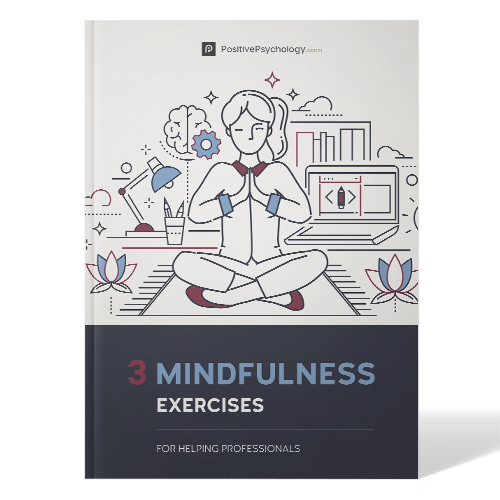
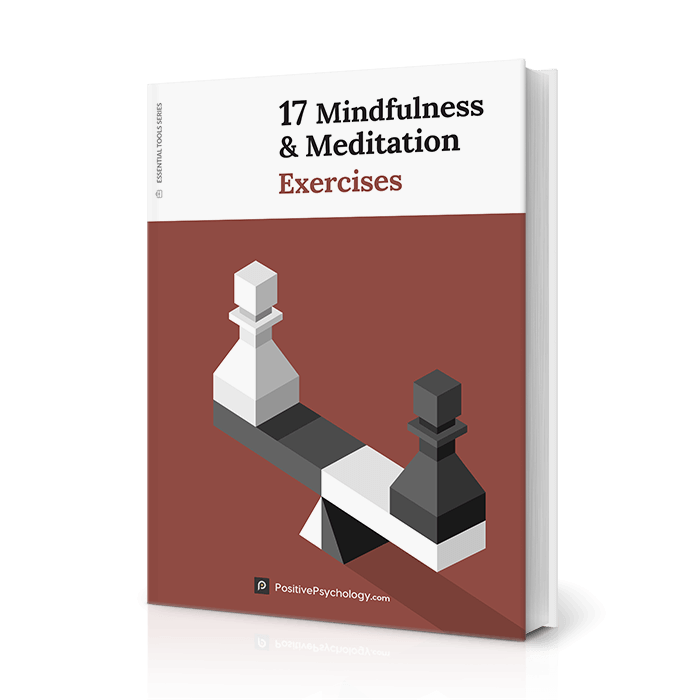


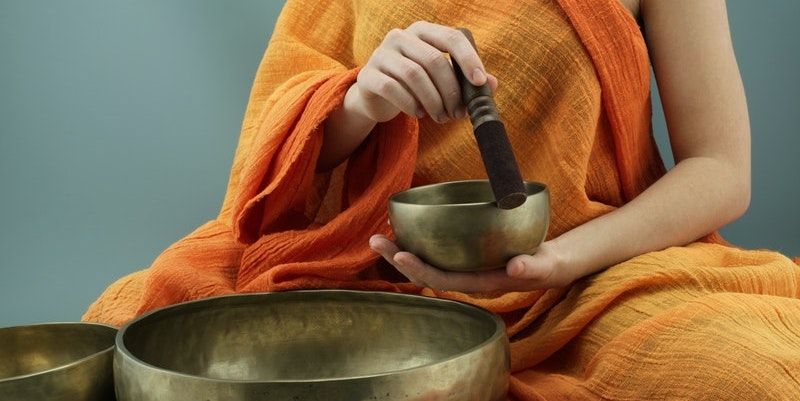
What our readers think
Hi Jeremy,
I’m Björn, the maker of Superchill, a PMR app. I’d love to be added to the list of PMR apps in this great article 🙂
https://apps.apple.com/us/app/superchill-pmr/id1478532954
https://superchillapp.co
Cheers, Björn
Hi Björn,
Thank you very much for letting us know about your app! I think it’s just the kind of thing our readers will find useful, so I’ve added it to the list 🙂
All the best!
– Nicole | Community Manager